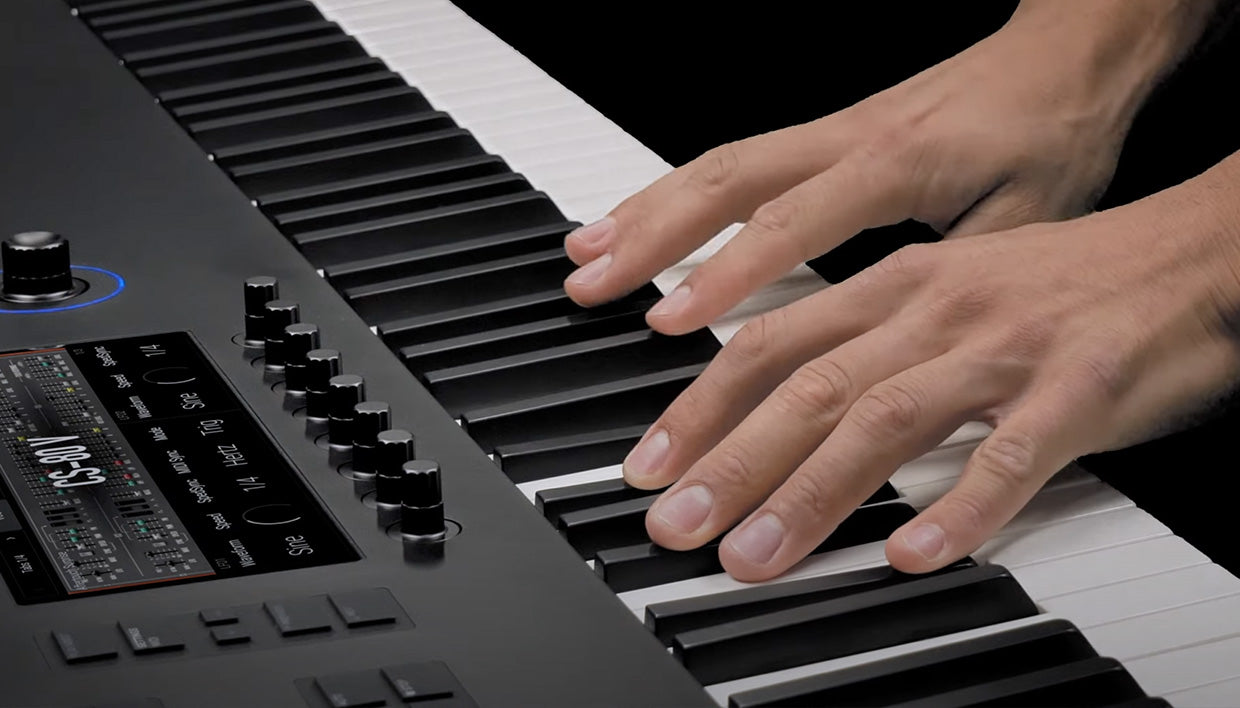
Finding the sweet spot for your keyboard or acoustic piano isn’t just about looking professional. The right height supports healthy posture, reduces fatigue, and lets your hands float across the keys instead of fighting them. Get it right once and you’ll thank yourself during every future practice session.
Acoustic manufacturers have converged on a surprisingly narrow band: the top of the white keys typically sits 28 – 30 inches (≈ 71 – 76 cm) above the floor. Steinway grands measure 28 ⅛ in (71.5 cm) while many uprights and digitals hover around 29 ½ in (75 cm).
That range became “standard” because it suits the average adult torso-to-arm ratio when the forearm rests level with the keyboard. Not everyone is average, of course—so treat those factory figures as a starting line, not gospel.
If you nail steps 1‑4, the keyboard height is probably good. If not, tweak. And yes, that tiny tweak can feel like night and day.
Because the piano can’t shrink, you adjust your seat:
|
Player Height |
Typical Bench Height |
Simple Fixes If Bench Runs Out of Range |
|
≤ 5 ft 3 in |
18 – 19 in (46‑48 cm) |
Add a firm cushion or wedge on the bench. |
|
5 ft 4 – 6 ft |
19 – 20 in (48‑51 cm) |
Use bench screws or an adjustable model. |
|
≥ 6 ft 1 in |
20 – 22 in (51‑56 cm) |
Raise bench fully; add low platform under pedals if feet dangle. |
A hydraulic artist bench makes this painless, but a thick yoga block under the bench legs works in a pinch.
Portable boards (including the Smart Keyboard) ride on X‑ or Z‑stands. Most offer multiple pinholes or clutch locks between 24 – 39 in. Shoot for ~29 in while seated; raise to 40‑44 in if you’re performing standing and want wrists neutral—not drooping. The PopuPiano’s quick‑latch Z stand makes those shifts pretty neat, especially mid‑gig.
Kids grow fast, pianos do not. Instead of endless bench swapping, consider:
Small changes keep practice comfortable and discourage slouching habits that linger into adulthood.
Fix height before blaming technique—many apparent “finger problems” vanish once the bench is adjusted.
Anything much below 28 in or above 30 in for a seated adult means compensations are happening elsewhere. Yamaha lists 730‑750 mm (28.7‑29.5 in) as factory spec for most models, which lines up neatly with our field findings.
Your best cue is elbow level, not the tape measure. Sit, place hands on keys, then glance sideways in a mirror:
If you play pop sets while standing, mount the board so the keys meet your belly‑button line. Yes, that’s an unscientific marker, but it correlates to neutral elbows for most adults. Fine‑tune in ½‑in steps until octaves feel effortless.
“Most adult students come in with the bench an inch too low. They’re shocked at how their forte opens up once we raise them—no extra strength required,” notes Clara W., a Sydney‑based pedagogue with 25 years of studio experience.
Her go‑to rule: spend five minutes on setup at the start of every lesson. Students memorize the feel, not just the number.
Because the PopuPiano Smart Keyboard pairs a slim chassis with an instant‑height Z‑stand, dialing in that 29‑in sweet spot takes seconds. LED‑guided practice is great, but the comfort adjustment is what keeps beginners practicing longer. Feel free to experiment—just lock the stand firmly before pounding out Rachmaninoff.
Keyboard height is easy to overlook yet central to effortless technique. Spend those extra minutes measuring, shimming, or cranking that artist bench. Your shoulders, wrists, and music will sound—and feel—better for it.
Ready to give your setup an instant glow‑up? Try raising (or lowering) your seat tonight, then revel in the smoother legato tomorrow morning. Small tweak, huge payoff.
Probably. Add a 1‑in cushion and place a footstool so knees remain slightly lower than hips. Check your mirror alignment.
A slight forward tilt (key front fractionally lower than back) can ease wrist angle, but keep it subtle—under 3°.
Nope. The standard 28‑30 in window simply minimizes seat changes for most adults. Personal anatomy and musical context rule.
Every time your body changes (growth spurts, injury) or you switch shoes—from flats to thick sneakers, can shift elbow level by half an inch.
Measure from the floor to the top surface of a white key (not the key slip). If it’s far below 28 in or above 30 in for seated play, compensate with bench height—or adjust your stand if you’re on a digital.
Use the elbow‑level rule and give their feet solid support (footstool) so knees stay slightly below hips. Re‑check every few months as they grow; with a stand‑mounted keyboard, this takes seconds.
Yes. Paired with an adjustable X‑ or Z‑stand, the Smart Keyboard can be set to ~29 in for seated practice or raised for standing sets while keeping wrists neutral. Always lock the stand before playing.
Read more

What Are Keys in Music? A Beginner’s Guide to Musical Keys
Music can feel like a secret language, but the idea of a key is one of its friendliest entry points. Crack this concept and suddenly chords, melodies, and even those mysterious key signatures begin...

What Is Polyphony on a Keyboard? Why It Matters for Piano Players
If you’ve shopped for a digital piano or a 64-key keyboard piano lately, you’ve probably seen numbers like 32-note, 128-note, or even 256-note polyphony splashed across spec sheets. But what exactl...